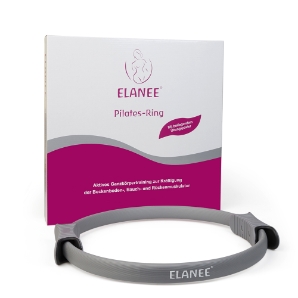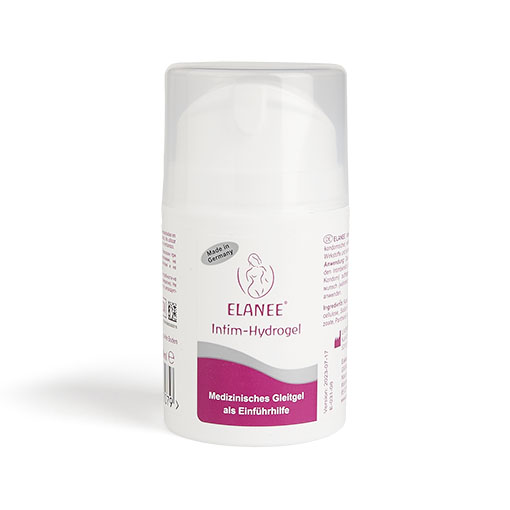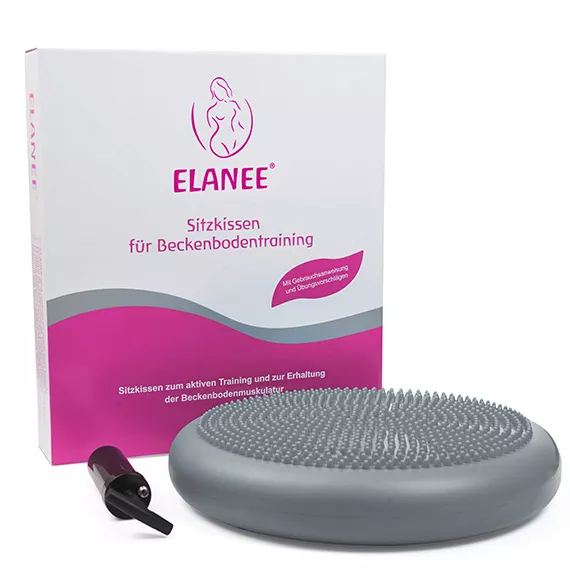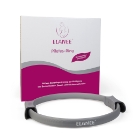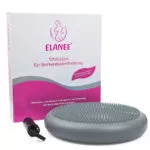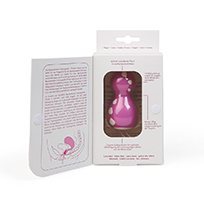Pelvic floor trainer
from ELANEE
Stomach, legs, bottom – training programs for women deal with all kinds of body parts.
Only the pelvic floor is rarely mentioned.
Until the first pregnancy, most of us hardly think about this muscle group, even though it literally plays a key role.
But how do I improve something that I don’t even know where exactly it is and how I can activate it in a controlled manner?
Our products for pelvic floor training, together with detailed instructions, will guide you through various exercises that will help you to consciously perceive and strengthen your pelvic floor muscles.

Our pelvic floor trainers support you in every situation: whether you are young or old, pregnant or going through the menopause – a weakened pelvic floor can lead to various problems.
With our products and precisely tailored exercises, you can prevent, alleviate or even completely eliminate them.
So that you can concentrate fully on the good things about being a woman again!
Our pelvic floor training products
Our pelvic floor training range comprises two types of products: Vaginally inserted (invasive) and externally applied (non-invasive) aids together form an effective team.
This allows you to rebuild and strengthen your pelvic floor muscles.
Pelvic floor training aids phase I active

You can actively train your pelvic floor with this set of four tampon-shaped cones.
The different weights help you to consciously perceive and control your pelvic floor muscles and also train them in everyday life.
Pelvic floor training aid phase II
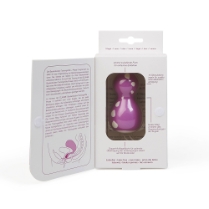
Have you successfully strengthened your pelvic floor muscles?
Then it’s important to stay on the ball!
Use the ELANEE training aid to maintain your training success.
The passive stimulation prevents your muscles from slackening again.
Strengthening the pelvic floor: Tasks and training levels
With our pelvic floor training products, you can directly address the affected muscle group in four problem-solving stages: from awareness of the pelvic floor muscles to conscious muscle control and muscle building through to stabilization.
To train and strengthen the three layers of the pelvic floor in stages, combine our ELANEE training aids with the exercises.

Feel the pelvic floor muscles
In the first problem-solving stage, you will find your pelvic floor muscles and learn to consciously perceive them.
This helps you to perform the exercises in a targeted manner – experience has shown that this is an important factor in the success of pelvic floor training.
Different muscle groups often work together to trigger a particular movement.
However, you rarely actively tense the pelvic floor muscles and therefore have no feeling for them.
In the first stage, you will learn to differentiate between the pelvic floor muscles and other muscle groups.
Use our pelvic floor training aids phase I active for this.
The items are a medical device and an approved aid and can be prescribed by a gynecologist or urologist.
They are even free of charge for women with stress incontinence.
Level
1
Conscious muscle control
Now that you can perceive and activate the muscle group, you need to learn to consciously control it.
In stage 2, you practise contracting the pelvic floor muscles in a targeted manner without tensing surrounding muscle groups, such as the gluteal muscle.
Regular exercises with the pelvic floor training aids Phase I active ensure this . The training is based on the biofeedback principle.
If you find insertion difficult, use the intimate hydrogel.
Level
2
Build up pelvic floor muscles
The third step is to strengthen your pelvic floor muscles with regular training. Targeted exercises can strengthen the different muscle layers of the pelvic floor, similar to weight training.
The reflex-like contraction of the pelvic floor muscles and the progressive increase in weights ensure effective muscle building.
Our tip: If you can hold the heaviest cone from phase I without any problems, use our intimate hydrogel to increase the level of difficulty!
The cones focus on the outer and middle muscle layer.
Also take a look at our carefully compiled exercise program.
It will also help you to strengthen the pelvic floor, especially the inner layer.
The pelvic floor training aid phase II is used for long-term follow-up training of the pelvic floor muscles.
Like the Phase I cones, it focuses on the outer and middle layer of the pelvic floor – but through passive stimulation.
Two free-swinging balls inside the cone vibrate gently with every movement, activating the pelvic floor.
You can also use our intimate hydrogel to make it easier to insert the cone.
Level
3
Stabilization
Like any muscle, the pelvic floor muscles also regress after a while without training.
To stabilize the pelvic floor and permanently counteract stress incontinence, you should regularly check your pelvic floor with the Phase I cones.
If your muscles have become weaker again, start training again.
Further pelvic floor exercises – with or without training aids – and recurring use of the phase II cone will ensure “stabilization”.
Level
4
Other proven exercises and pelvic floor products
You can train your pelvic floor even more effectively with additional measures that you can easily integrate into your everyday life.
Supplement your training program with our other products for pelvic floor exercises.
Pilates ring
The Pilates ring not only trains your pelvic floor muscles, but also your whole body!
Just by squeezing the ring with your legs, you actively work your pelvic floor.
You will also find instructions on the enclosed exercise poster to strengthen and build up your pelvic floor, abdominal and back muscles.
Intimate hydrogel
Our medical intimate hydrogel is water-based and non-greasy.
Thanks to panthenol, it provides gentle care when your mucous membranes feel dry and uncomfortable.
But also to make it easier to insert our pelvic floor trainers.
Seat cushion
Have you ever heard of “active sitting”?
When you sit on a cushion filled with air, you automatically use your hip and pelvic floor muscles to stay in balance.
With our ELANEE seat cushion, you can train the inner muscle layer of your pelvic floor and maintain a healthy posture.
You will also receive an exercise program for this
Everything you need to know about the pelvic floor
What is the pelvic floor?
The pelvic floor is a kind of plate consisting of three layers of muscles and connective tissue.
About the size of the palm of your hand, elastic and flat, it is located between the pubic bone, coccyx and ischial tuberosities.
The urethra, vagina and anus pass through the pelvic floor muscles.
- The outer layer (erectile tissue and sphincter layer) surrounds the urethra and anus like a figure of eight.
It extends from the pubic bone to the coccyx. - The middle layer (urogenital diaphragm) plays a key role in closing the urethra and contracting the vagina.
It lies in a fan shape between the ischial tuberosities in the front part of the pelvis and below the bladder. - The inner layer (diaphragm pelvis) forms the power center of the body’s midsection – because it carries the main load of the organs.
The particularly broad and stable muscle runs from the pubic bone to the coccyx.
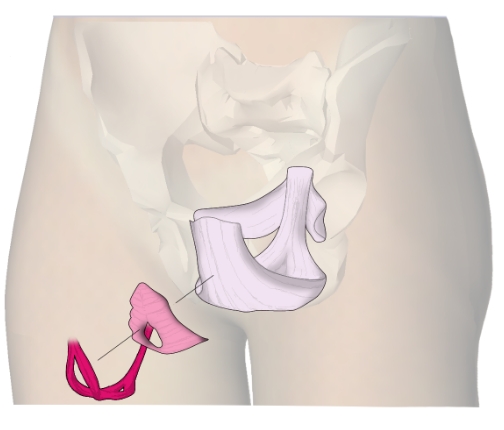
What does the pelvic floor do?
The tasks of the pelvic floor are already hidden in its name: As the floor of the pelvis and abdomen, it bears the main load of the organs located there.
It thus supports the hips and legs – and ensures that we can stand upright in the first place.
We also use this muscle group to control the closing function of the bowel and bladder.
In other words, the pelvic floor muscles:
- ensures that the bowel and bladder only empty when they want to.
- holds the internal organs of the abdomen and pelvis.
- carries the weight of the child during pregnancy.
- is relevant for pain-free sexual intercourse.
- stabilizes the posture.
- tenses reflexively when coughing, sneezing, laughing or carrying heavy objects.

What are the typical symptoms of a weak pelvic floor?
A healthy and strong pelvic floor is very important – but with increasing age, pregnancy or an unhealthy lifestyle, the muscle group loses strength and elasticity.
The consequences of pelvic floor weakness can severely impair quality of life:
- Stress incontinence
- Urge incontinence
- Fecal incontinence or constipation
- Pain in the abdomen and/or back
- Poor posture
- Malposition of the organs in the abdominal cavity
- Uterine or vaginal prolapse
- Bladder or bowel prolapse
- Perceptual disturbance and disturbance of the sense of pleasure

Stress incontinence means that the pelvic floor muscles can no longer compensate for sudden pressure.
If you laugh or cough, this can lead to involuntary bladder or – in rarer cases – bowel leakage.
When can I train my pelvic floor?
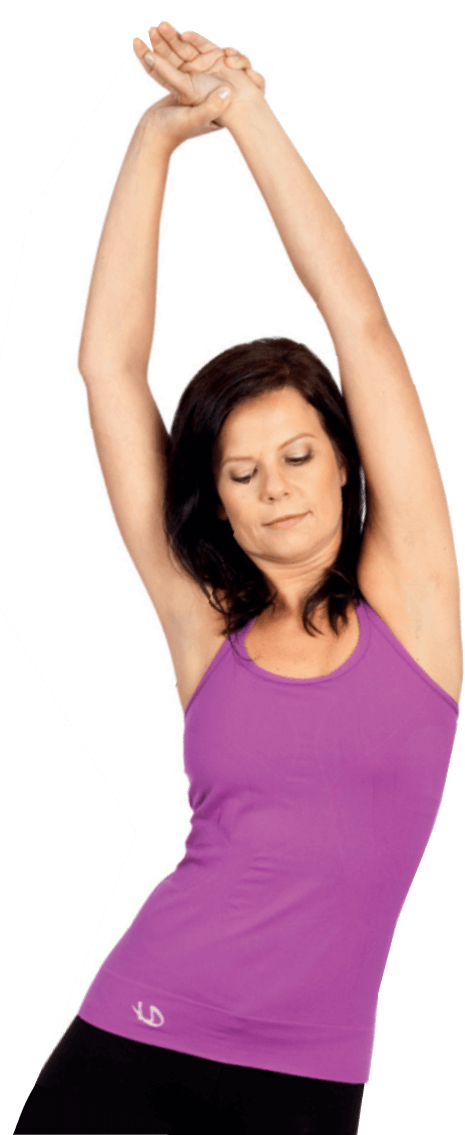
During pregnancy
During an uncomplicated pregnancy, you can exercise your pelvic floor at any time as long as you feel comfortable doing so.
This will directly prevent any problems that may arise due to weakened pelvic floor muscles.
The weight of your growing child rests mainly on this muscle group - so it makes sense to strengthen it.
After the birth
During childbirth, the pelvic floor naturally stretches to allow your child to pass through.
As soon as your cervix has closed again - after about a month and a half of postpartum - you can start or resume pelvic floor training.
This will help your pelvic floor muscles to regenerate.
If you are unsure whether you are allowed to do the exercises, ask your doctor or midwife beforehand.
For stress incontinence
If you suffer from bladder weakness caused by a weakened pelvic floor, our pelvic floor trainers and exercises will help you to strengthen your muscles again.
However, always make sure you clarify whether it is really stress incontinence, as bladder weakness can have many different causes.
Everything for your training
The top 6 exercises for your pelvic floor training
The best way to strengthen your pelvic floor is with a combination of our pelvic floor trainers and suitable exercises.
We have put together 6 of them for you here.
For further suggestions, take a look at our detailed exercise programs for the Pilates ring, the seat cushion and the cones.
2 exercises lying down with the Pilates ring
Exercise 1: One hundred
Lie on your back with your arms parallel to your body.
Place your feet hip-width apart.
Hold the Pilates ring between your bent legs above your knees.
Inhale, lift your head, shoulders and arms off the floor and gently squeeze the ring.
Now exhale and inhale evenly in 5-second intervals while moving your outstretched arms up and down quickly a hundred times.
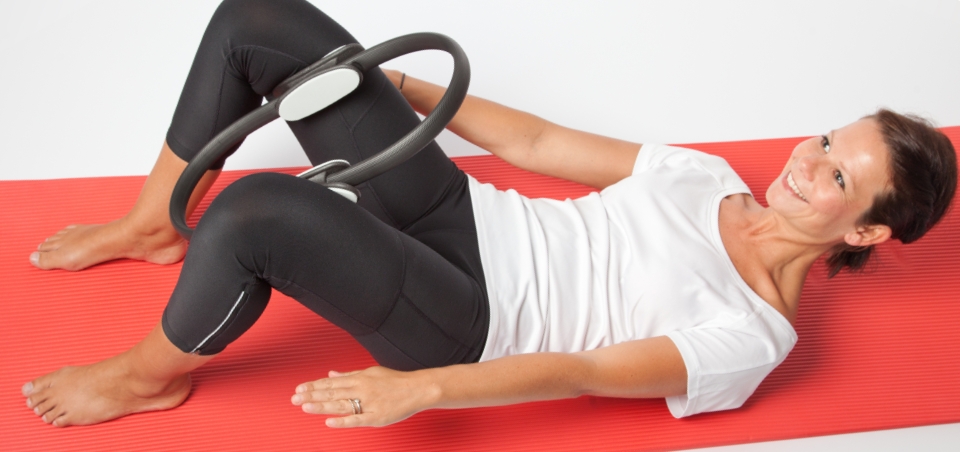
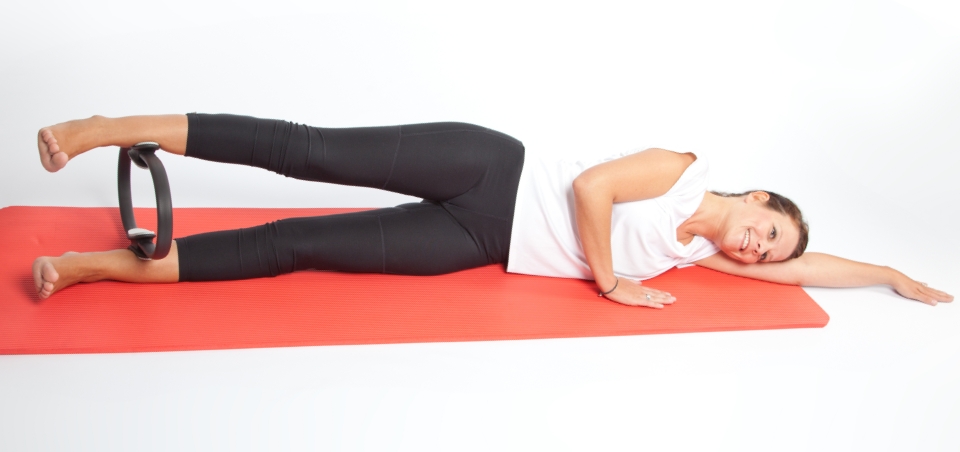
Exercise 2: Lateral position
Lie on your side and rest your head on your outstretched arm.
Use your other hand to support yourself in front of your chest.
Place the Pilates ring between your outstretched legs slightly above your ankles.
As you exhale, push the ring towards your lower leg with your upper leg.
After 3 seconds, slowly release.
Now it’s the lower leg’s turn.
Repeat the exercise 5 to 8 times per side.
2 Standing exercises with the pelvic floor trainer phase I
Exercise 1: Walking
Perfect for everyday life: stand upright, tense your pelvic floor muscles as you inhale and relax them again as you exhale.
Once you have developed a feel for this, take a few steps while repeating the tensing and relaxing in the rhythm of your breathing.
You can also do this wonderfully on your way to the coffee machine in the kitchen!
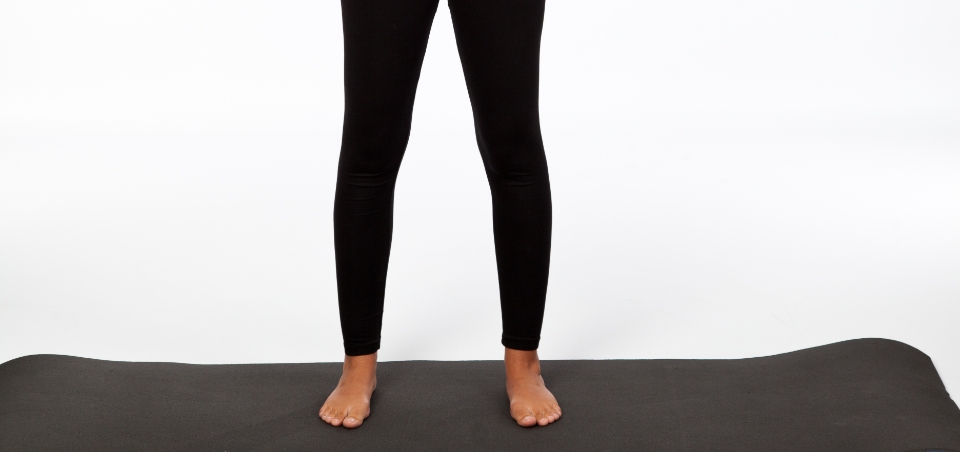
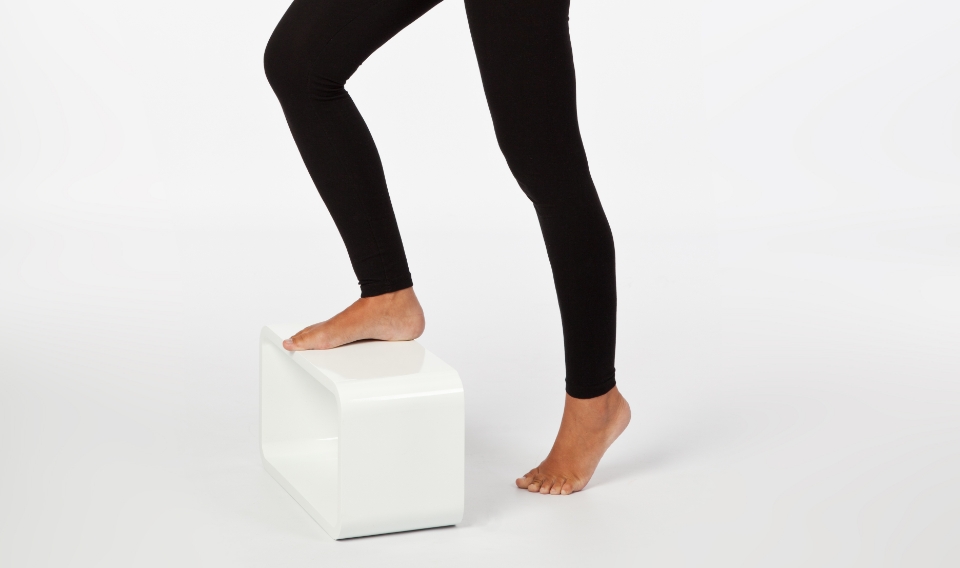
Exercise 2: Climbing stairs
You will need a step or another safe elevation.
As a little extra: place a cherry stone cushion on your head and try not to let it slide down during the exercise – this promotes an upright posture!
Place your right foot on the heel and tense your pelvic floor with your next exhalation.
Slowly shift your weight onto your right leg until only the tips of your left toes are touching the floor.
As you inhale, slowly shift your weight back again.
Do this 5 times on the left and right for a total of 3 repetitions.
2 Sitting exercises with our seat cushion
Exercise 1: Cat hump for beginners
Place the seat cushion on a chair and sit on it.
Now change your sitting position 10 times: start with a slight hollow back by tilting your hips forward.
Then tilt them back again to form a cat hump.
You can repeat the exercise 3 times, but pause for a minute in between.
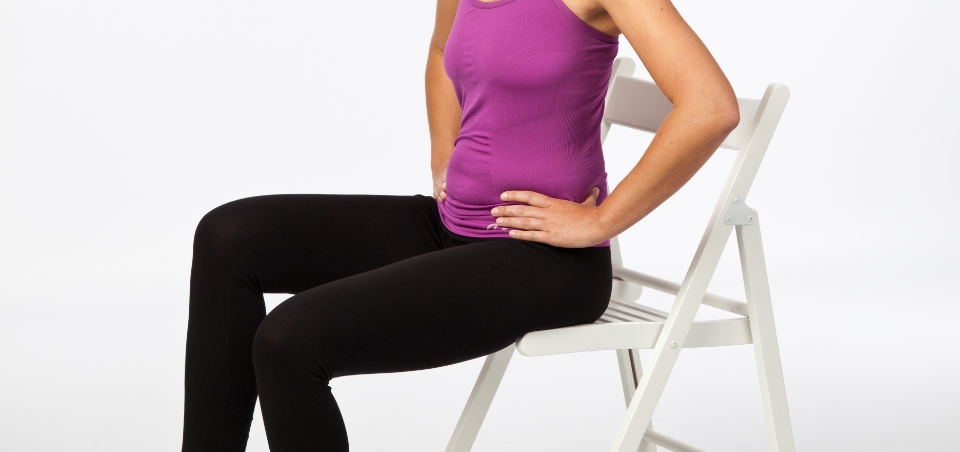
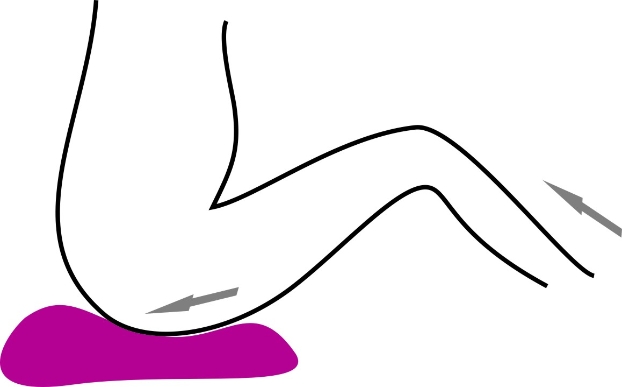
Exercise 2: Bridge for professionals
Now it gets a little more difficult: For this exercise, sit on the floor with the seat cushion and support yourself with both arms behind your back.
Place your feet on the floor.
Now raise your legs about 20 cm into the air while keeping your torso and back straight and stable.
After holding the position for 5 seconds, lower your legs again in a controlled manner and rest for 5 seconds.
Repeat the exercise 10 times.
You can find more exercises to strengthen your pelvic floor in our blog section
© Grünspecht Naturprodukte GmbH | Imprint | Privacy Policy | [borlabs-cookie type=”btn-cookie-preference” title=”Cookie settings” element=”link” /]

